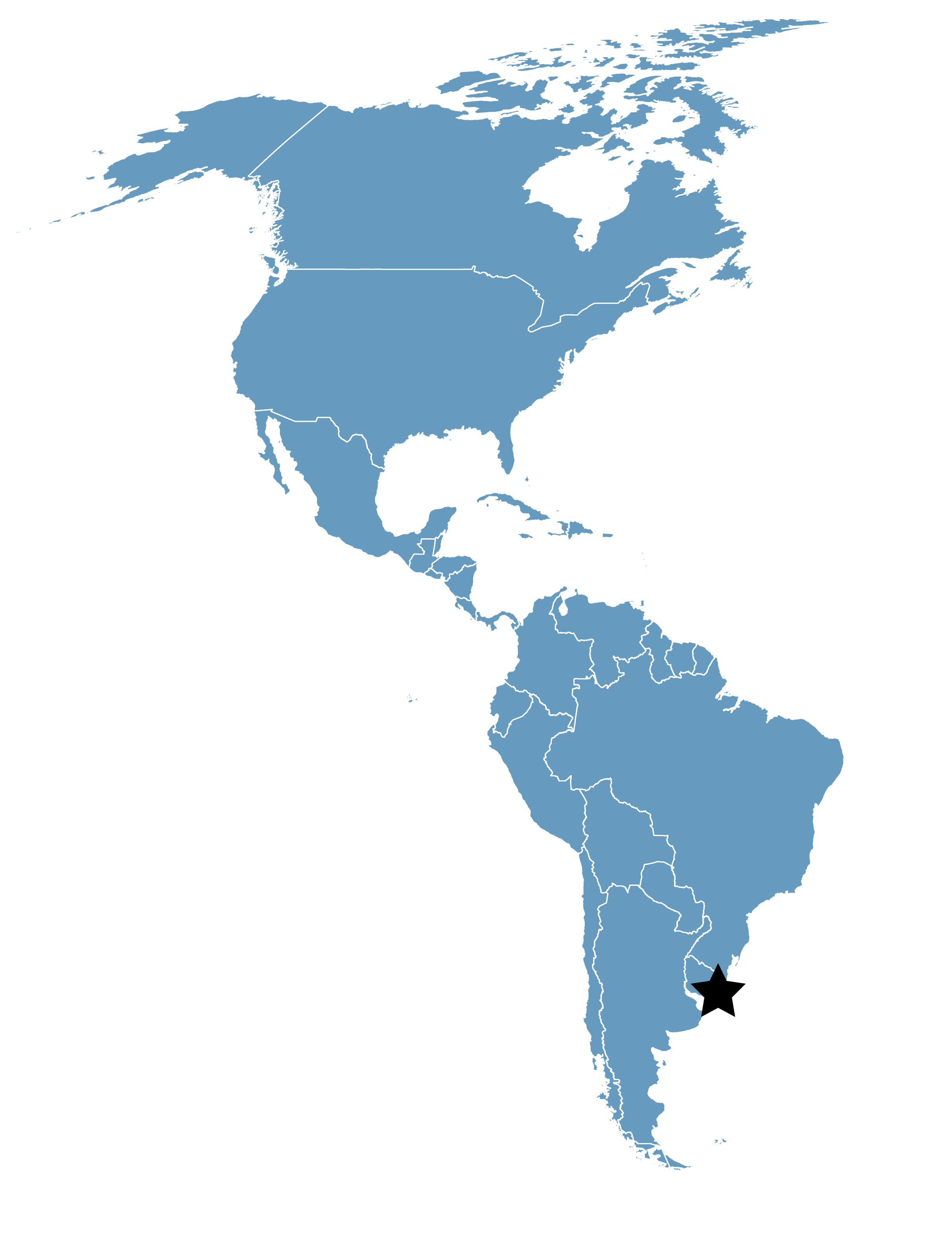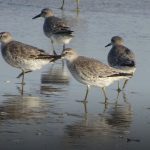Laguna de Rocha
Location
Rocha, Uruguay
Category
Regional
Basis for Designation
More than 1% of the flyway population for Buff-breasted Sandpiper (Calidris subruficollis).
Size
16,500 hectares (40,772 acres)
Date Designated
March 2010
Site Owner
General Directorate of Renewable Natural Resources: Ministry of Livestock, Agriculture, and Fisheries
National System of Protected Areas (SNAP)
DINAMA-MVOTMA
Site Partners
Fundación Amigos de las Lagunas Costeras de Rocha
Asociación de Pescadores
Aves Uruguay/Alianza del Pastizal
BirdLife International
Science Department, Centro Universitario Regional Este
PROBIDES
Asociación Averaves
Departmental Governement of Rocha
Overview
Laguna de Rocha, located in the Southeast of Uruguay (Department of Rocha), is a lagoon that is part of a string of several coastal lagoons in Uruguay and southern Brazil. It is a shallow and brackish lagoon separated from the coastline by a sandy bar that is periodically connected to the Atlantic Ocean by a channel. Water from land and sea converge in the lagoon, which determines several of the general characteristics of the ecosystem. The water level is related to the rainfall regime and the exposure and flooding of the sandbar, which in turn affects the high productivity and biological diversity of the system. The tides have very little impact on the state of the lagoon.
In spring and summer (from October to March) the site hosts Nearctic migrants, coming from their breeding grounds in the North American tundra. Beginning in the austral autumn, toward the end of April, the lagoon is visited by migratory birds that breed in Patagonia, in southern South America. In search of a more pleasant climate and better food supply, the birds arrive at the Laguna de Rocha site, where they will stay for 3 or 4 months.
Laguna de Rocha was designated as a WHSRN site in Uruguay for hosting more than 6% of the global population of the Buff-breasted Sandpiper (Calidris subruficollis); this makes Laguna de Rocha one of the most important sites of the species worldwide. In addition, the site is notable for the important concentrations of the American Golden-plover (Pluvialis dominica) and the presence of 20 other species of shorebirds. Laguna de Rocha has been integrated into Uruguay’s National System of Protected Areas as a Protected Landscape; it is also part of the Bañados del Este Biosphere Reserve (UNESCO), Area of Importance for the Conservation of Birds, and Ramsar Site.
Land tenure is a mix of public and private. The fields and a good part of the sandy bar in the south area are privately owned, while the water itself is state-owned. The predominant environments are pastures and marshes, which are periodically flooded by variations in the level of the lagoon. The water, dunes, and sandy beaches are located where the lagoon meets the sea.
The most widespread land use is livestock grazing, which generally helps maintain habitat for grassland shorebirds as well as supports the community of rural producers who live off the resources that the lake provides. Fishing is a common practice in the area, with a core group artisanal fishermen in the community. The tourism during the summer period is intense, particularly from the nearby and attractive resort La Paloma, whose beaches and scenic beauty attract thousands of tourists from many countries.
Shorebird Research
Aves Uruguay, in conjunction with Universidad de la República (CURE) and with the support of the organization Fundación Amigos de las Lagunas Costeras de Rocha, conduct banding studies of Buff-breasted Sandpipers and American Golden-plovers, with support from the U.S. Fish and Wildlife Service (USFWS), the US Forest Service (USFS), the Canadian Wildlife Service (CWS), AAGE Jensen Carity Foundation, BirdLife International, Grasslands Alliance, Manomet Center for Conservation Sciences, and the Responsible Production Project (MGAP). The Averaves Association leads the census of waterfowl (CNAA) that provide biannual information about the waterbirds in the lagoon.









